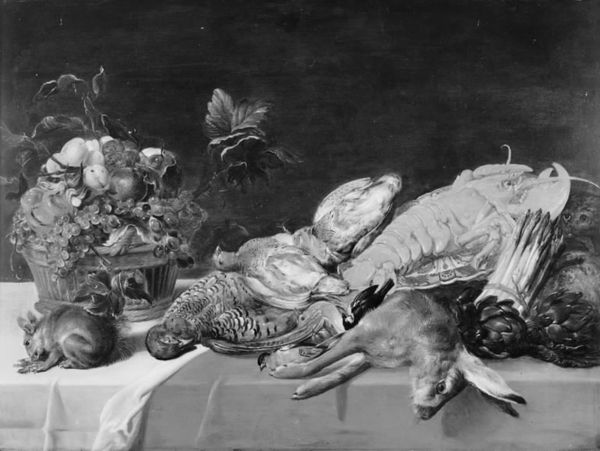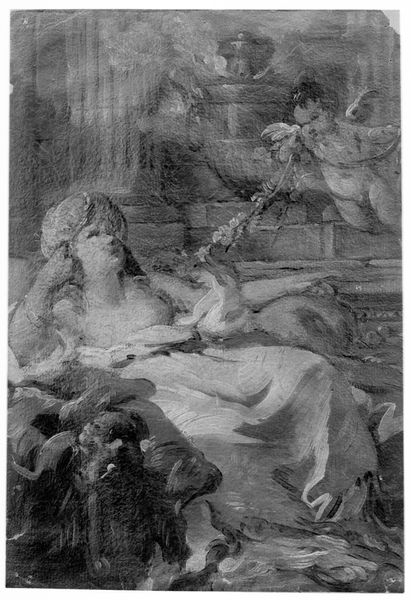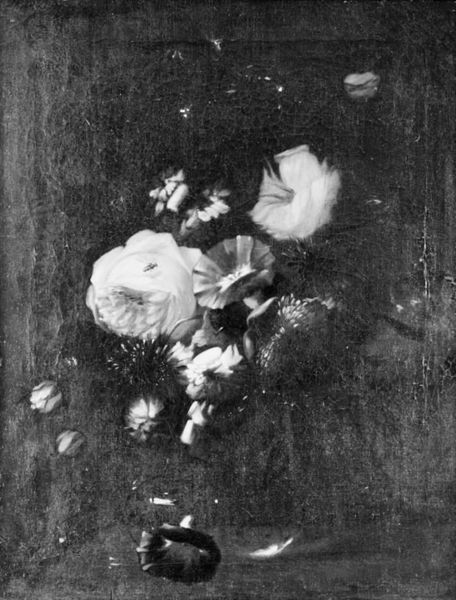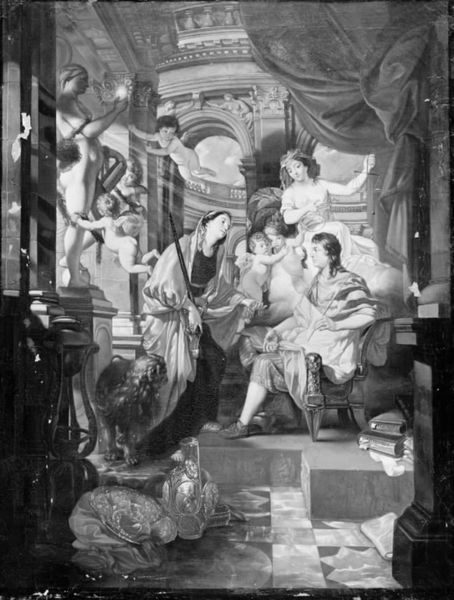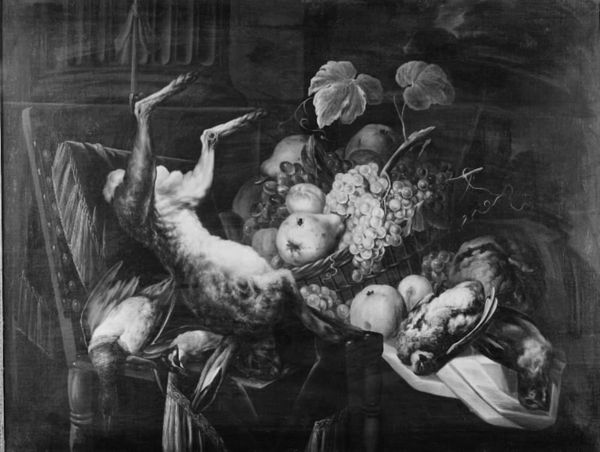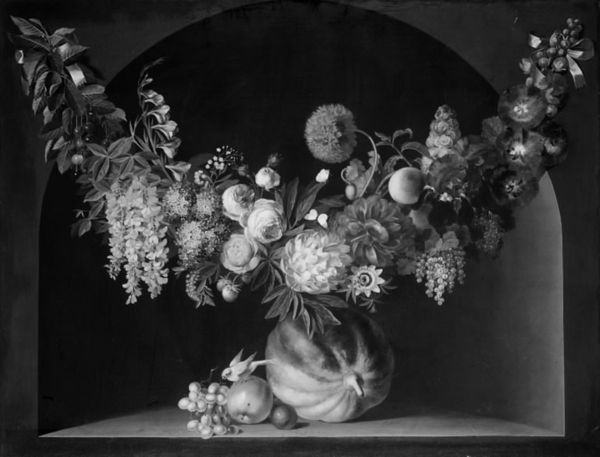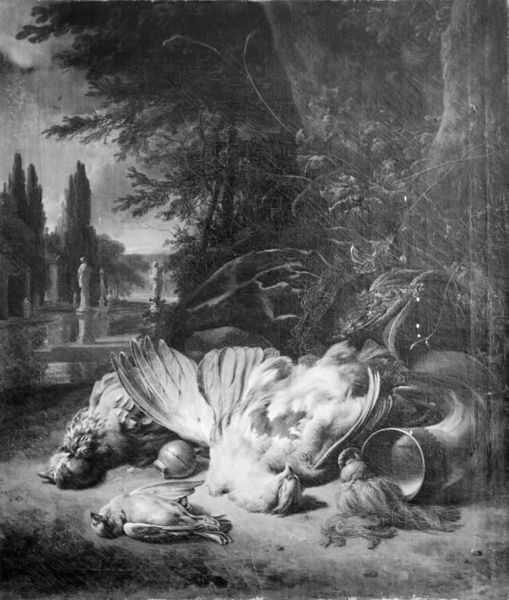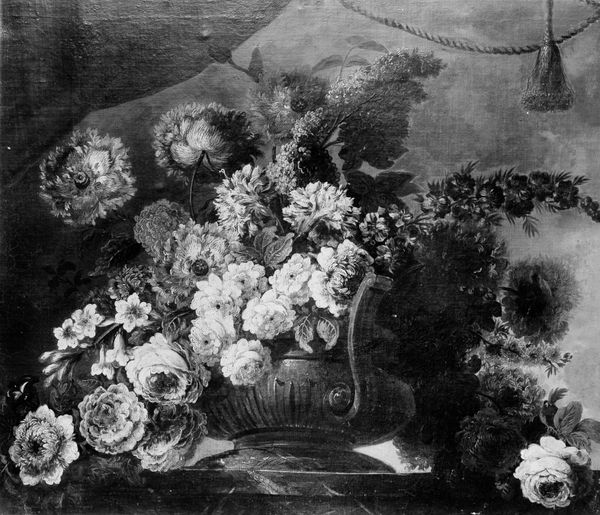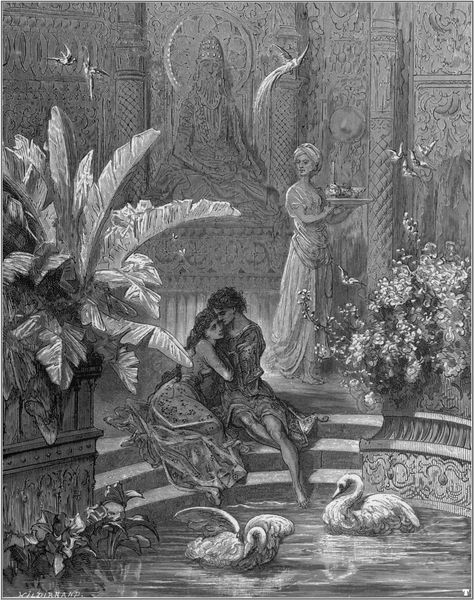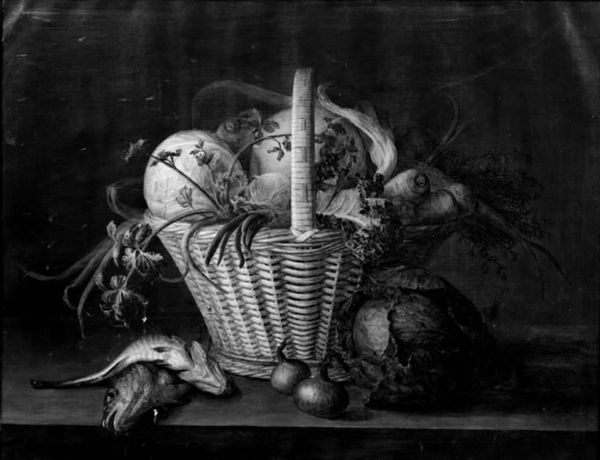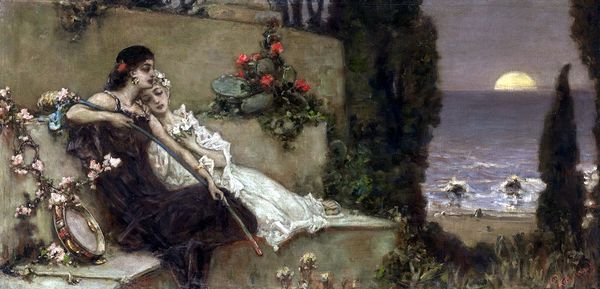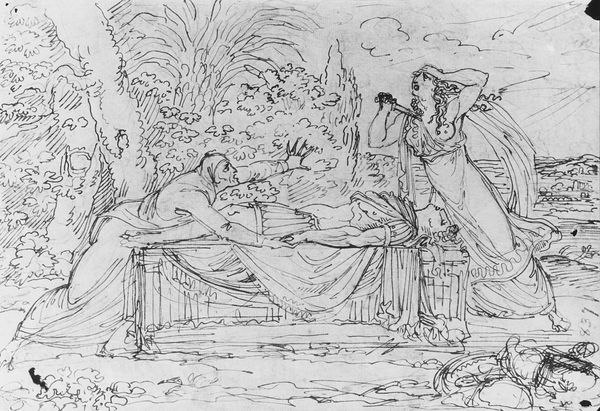
Still Life with Small Game, Basket of Fruit, Goldfinches and a Squirrel 1594 - 1657
0:00
0:00
painting, oil-paint, canvas
#
baroque
#
dutch-golden-age
#
painting
#
oil-paint
#
sculpture
#
canvas
#
genre-painting
Dimensions: 91.5 cm (height) x 123 cm (width) (Netto)
Curator: Here we have what’s referred to as a Dutch Golden Age painting. Experts haven't yet identified the artist but the style of Still Life with Small Game, Basket of Fruit, Goldfinches and a Squirrel points to that era. It was created between 1594 and 1657 using oil paint on canvas and is on display at the SMK, the National Gallery of Denmark. Editor: My initial reaction is…abundance, almost to the point of surfeit. All this lavish display feels weighed down somehow. Curator: Absolutely. These still lifes were complex messages during that period. On the one hand, they represented the wealth and prosperity achieved through global trade. The burgeoning middle class wanted to show off their access to luxury. Editor: But beyond that, what do we make of the, shall we say, rather prominent presence of dead game birds here? It seems to be more than just a celebration of the harvest. There's an underlying tension there, a suggestion of mortality perhaps. The goldfinches in the title, symbols of the soul, are caged too. It creates an interplay of freedom and restriction. Curator: Exactly. These works often carried moralizing undertones. The temporary nature of earthly pleasures, the inevitability of decay… Vanitas. Think of these elements – the hunted game, the ripe fruit on the cusp of overripening – as reminders of our own mortality. The squirrel too! Editor: It’s fascinating how the inclusion of animals shifts the reading of the painting. We tend to frame our consumption within narratives of progress and prosperity. When we face what's being consumed or the impact that has, it unsettles the celebratory mode quite drastically. Curator: The art market catered to the desires and social ideals of its patrons. Consider what the purchasing of art such as this symbolized at the time in contrast to our interpretation centuries later. The art has not changed but our interaction with it surely has. Editor: Yes, the silent dialogue across time. I see this work, in this time, as a reflection on our tangled relationship with nature, how beauty and death become so intertwined within consumer culture. It makes you reflect, doesn't it? Curator: Indeed. And hopefully that reflection translates into tangible changes in our own lives.
Comments
No comments
Be the first to comment and join the conversation on the ultimate creative platform.

